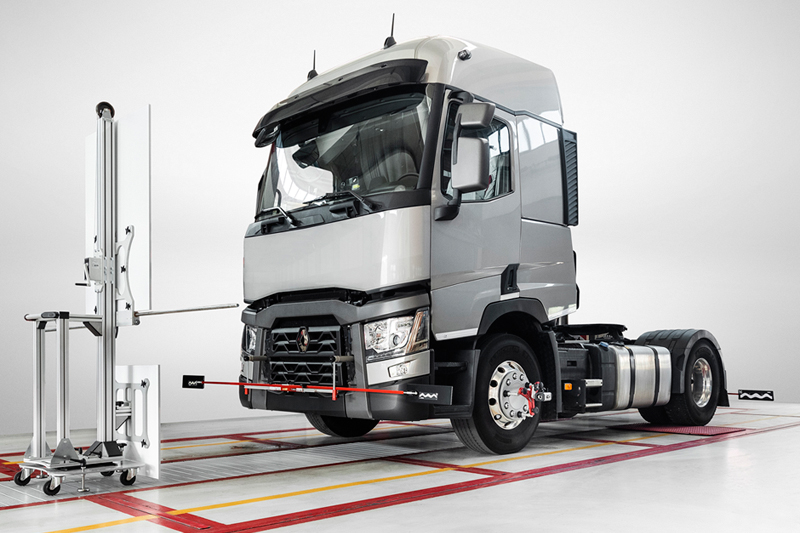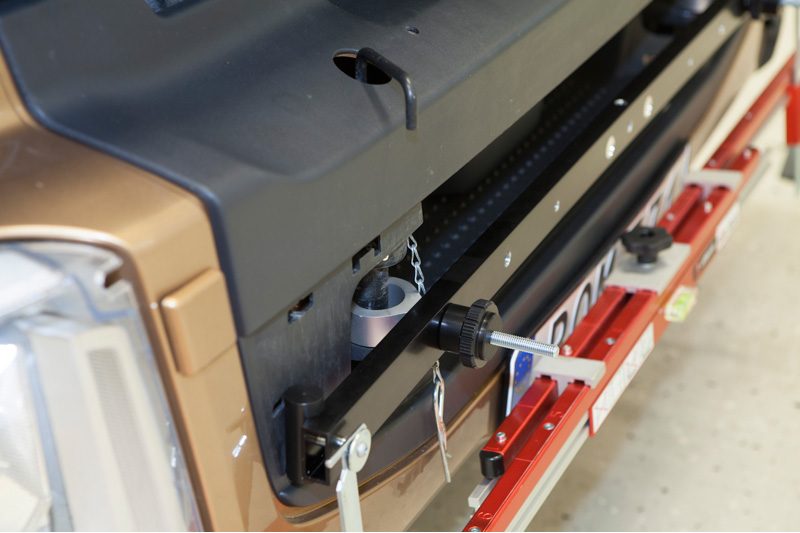
AES UK’s new Josam Cam-aligner provides all the necessary equipment to perform quick and accurate wheel alignment measurements with documentation. Here are the features and benefits.
The future-proofed system makes it easy to measure and adjust all vehicle configurations, including dynamic steering enabled vehicles. It also has the functionality to perform calibration of the FLS/LPOS sensors without the need for a road test. Volvo and Renault approved system features:
- Ability to perform static FLS and LPOS calibration
- Ability to quickly measure caster, KPI and turn angles
- Twinsteer measure and adjustment modes
- Frame measurement
Static LPOS and FLS calibration
Lane position object sensors (LPOS) and forward-looking sensors (FLS) talk to the on-board control units for lane departure warning systems (LDWS), autonomous emergency braking systems (AEBS) and the emergency brake, collision warning systems (EB-CW). The AEBS and LDWS could need calibrating for a number of reasons, including a cracked windscreen, collision on the lower front, large adjustment of rear axles and many more.
The Volvo and Renault approved system and software allows calibration of the LPOS and FLS without having to drive the vehicle. Driving calibration of these sensors can be time consuming; road, weather and lightning conditions, as well as the vehicle itself, can impact the time it takes to calibrate, and sometimes not even calibrate it at all. Usually, two operatives are needed on a driving calibration.
A static calibration offers the following advantages;
- Only one operator is required
- It is safer, as the truck remains in the workshop
- Both sensors can be calibrated at once
- Weather and lighting do not impact results
- A faster calibration process, compared to driving calibration
- It’s cost-effective compared to on-road calibration

Measure and adjust caster, KPI and turn angles
This measurement is based on a single continuous movement of the wheels, from a straight-ahead position to maximum left, via maximum right and back to the starting position. During this procedure, the built-in gyroscope and inclinometer are constantly transmitting data to the computer, which calculates the caster, KPI and turn angles in different wheel positions. The entire process can be carried out in a matter of minutes.
Measuring and adjusting twinsteer
The approved system allows for easier measuring of twinsteer vehicles; the cameras are mounted on the steering-gear side of the vehicle, with one camera facing forward (1st steer) and one camera facing backwards (2nd steer). This allows the system to monitor the straight-ahead position in live mode, whilst adjustments to the second-steer can be performed by providing a before and after report.
Frame measurement
The approved system also allows users to measure a vehicle’s chassis: the software requires an input of frame width at the front and rear of the vehicle, and also the width of the mounted gauge. From this, the software guides you through taking reference points, then onto measurement points along the chassis. The output is a graphic report stating side bend and vertical bend.








